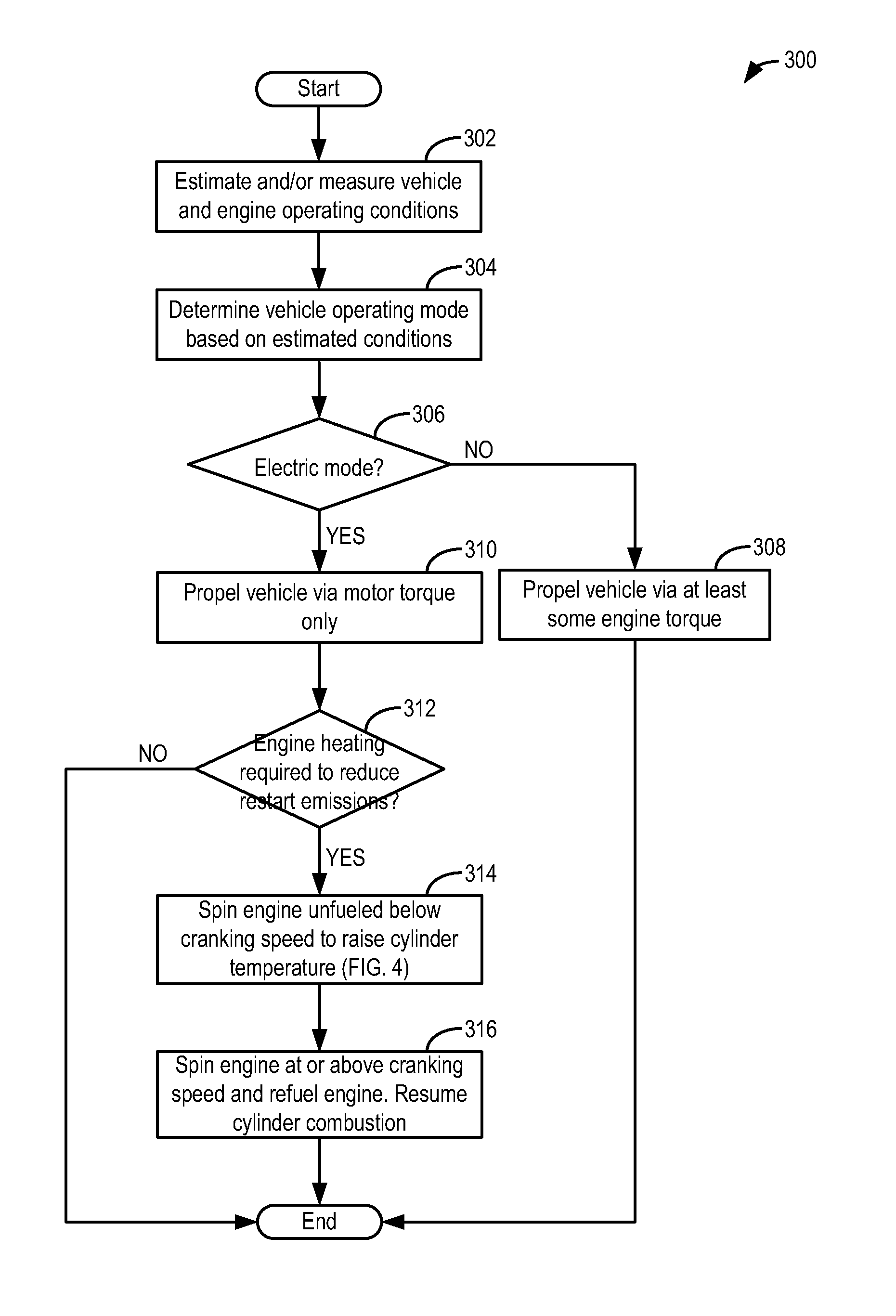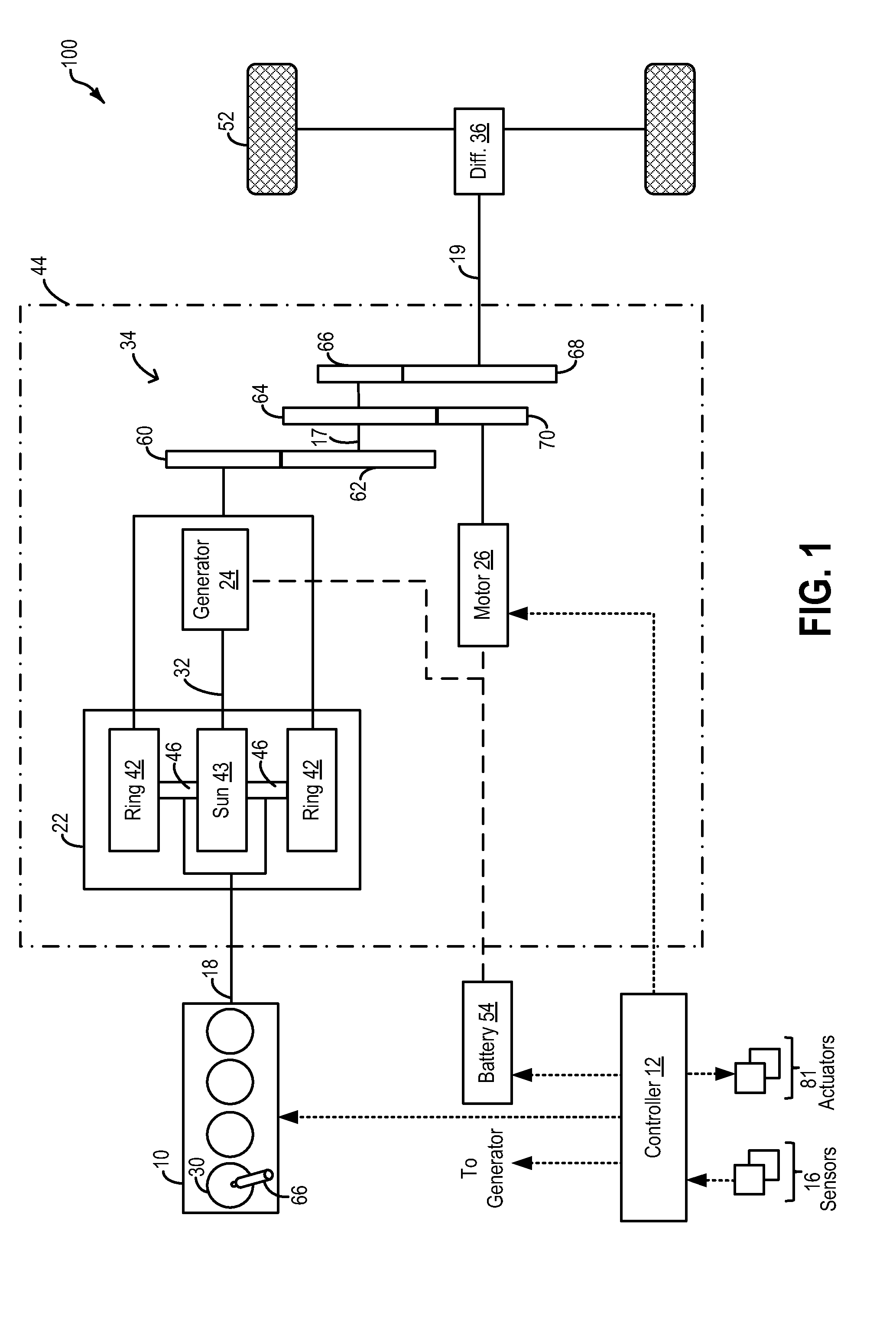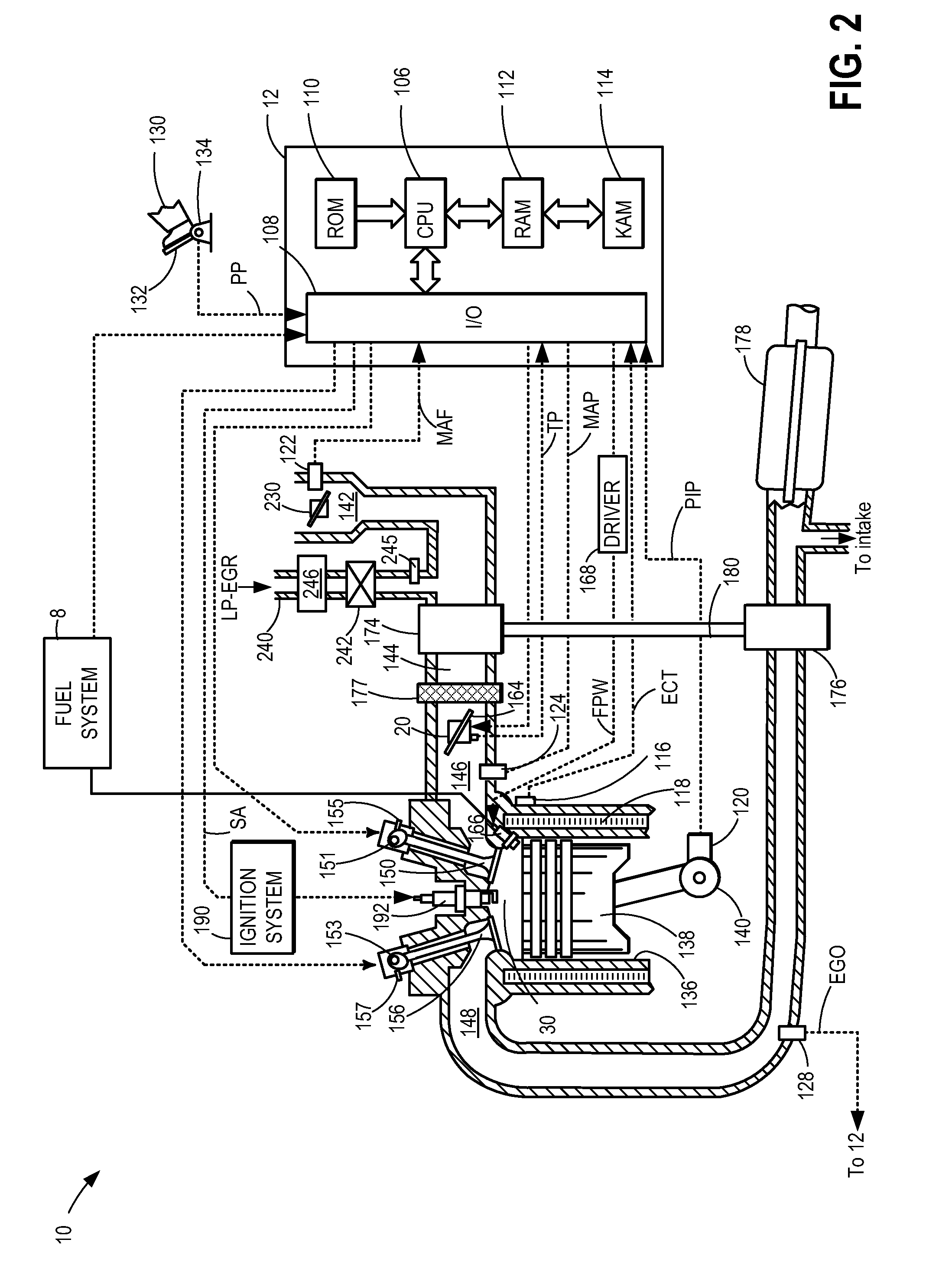Method and system for engine control
a technology of engine cranking and control system, which is applied in the direction of mechanical equipment, hybrid vehicles, transportation and packaging, etc., can solve the problems of degrading exhaust emissions, insufficient time for mixing of injected fuel and air in the cylinder, and generating more particulate matter (pm) emissions, etc., to achieve better enabling the charge cooling effect of injected fuel, high fuel efficiency, and high power output
- Summary
- Abstract
- Description
- Claims
- Application Information
AI Technical Summary
Benefits of technology
Problems solved by technology
Method used
Image
Examples
Embodiment Construction
[0015]The following description relates to systems and methods for reducing particulate emissions from an engine, such as the engine system of FIG. 2, coupled in a hybrid vehicle system, such as the plug-in hybrid electric vehicle of FIG. 1. A controller may be configured to perform a routine, such as the example routines of FIGS. 3-4, to rotate the engine, unfueled, during vehicle operation using motor torque, so as to use compression stroke heat transfer (FIG. 6) to heat engine combustion chambers while also raising fuel pressure. The engine may then be further rotated to preposition the engine for the engine restart. An example engine rotation operation is shown at FIG. 5. In this way, the quality of exhaust emissions, particularly during cold-starts, is improved.
[0016]FIG. 1 depicts a hybrid propulsion system 100 for a vehicle. In the depicted embodiment, the vehicle is a hybrid electric vehicle (HEV). Propulsion system 100 includes an internal combustion engine 10 having a plur...
PUM
 Login to View More
Login to View More Abstract
Description
Claims
Application Information
 Login to View More
Login to View More - R&D
- Intellectual Property
- Life Sciences
- Materials
- Tech Scout
- Unparalleled Data Quality
- Higher Quality Content
- 60% Fewer Hallucinations
Browse by: Latest US Patents, China's latest patents, Technical Efficacy Thesaurus, Application Domain, Technology Topic, Popular Technical Reports.
© 2025 PatSnap. All rights reserved.Legal|Privacy policy|Modern Slavery Act Transparency Statement|Sitemap|About US| Contact US: help@patsnap.com



